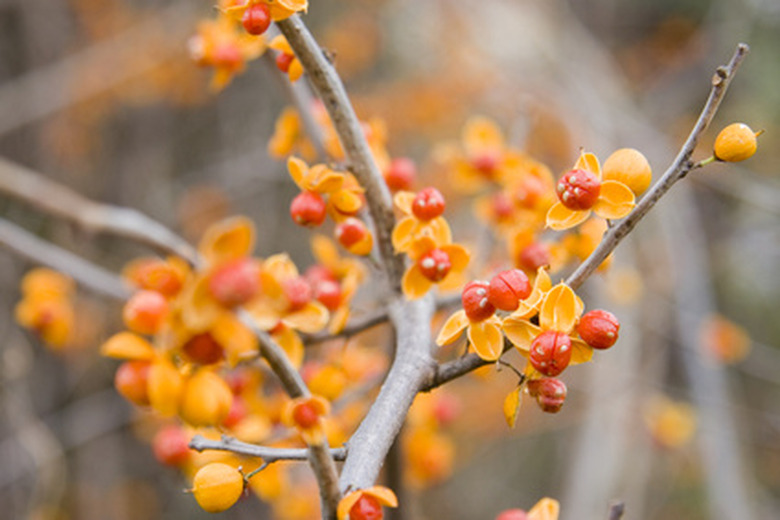How To Prune A Bittersweet Vine
Adding a touch of seasonal color to autumn crafts, decorations and floral arrangements, American bittersweet (Celastrus scandens) is a vigorous climbing vine that can reach 25 feet in length. It is rather insignificant in the landscape most of the year. In autumn, yellowish-orange fruit capsules split open to reveal bright orange berries inside. The berries remain on the vines even after the yellow fall foliage drops off. Lengths of vine with the berries still attached, or "sprigs," are incorporated into seasonal décor.
Step 1
Prune bittersweet annually in early spring before the leaves have fully opened. Remove any dead or diseased vines or branches. Cut them back into healthy or live wood.
- Adding a touch of seasonal color to autumn crafts, decorations and floral arrangements, American bittersweet (Celastrus scandens) is a vigorous climbing vine that can reach 25 feet in length.
- Prune bittersweet annually in early spring before the leaves have fully opened.
Step 2
Remove old shoots that have become unproductive and are crowding out newer, more vigorous branches. Cut them out near the base of the bittersweet vine.
Step 3
Select enough of the larger branches to outline the supporting structure of the bittersweet vine and remove all others. This will encourage the vine to produce new growth during the current year, on which berries will grow the following year.
Step 4
Cut back shoots, or "spurs," and side branches growing out from the larger branches selected in Step 3. These side branches are those that grew the previous summer and will produce flowers and berries during the current year. Make the side shoots about 12 to 18 inches long.
- Remove old shoots that have become unproductive and are crowding out newer, more vigorous branches.
- These side branches are those that grew the previous summer and will produce flowers and berries during the current year.
Bittersweet Vine Blossom?
To promote bittersweet flowers, plant the vine where it receives full sun. Bittersweet thrives in alkaline soils. At high pH levels, necessary soil nutrients are freed up and become available to the vine. Without them, flowering suffers. American bittersweet blooms on the tips of new wood grown in the current season. For most bittersweet gardeners, the goal remains showy ornamental fruit. Females bear insignificant greenish-yellow blooms. If you have a single vine, whether male or female, you need an addition to the garden.
- To promote bittersweet flowers, plant the vine where it receives full sun.
- For most bittersweet gardeners, the goal remains showy ornamental fruit.
Things Needed
- Pruning clippers
- Pruning saw
References
- University of Illinois Extension: Pruning Climbing Vines
- The New Sunset Western Garden Book: Celastrus Bittersweet
- The Morton Arboretum: American Bittersweet
- Missouri Botanical Garden: Celastrus Scandens
- The University of Texas at Austin Lady Bird Johnson Wildflower Center: Pruning Bittersweet Vine
- Brooklyn Botanic Garden: Growing Vines Successfully
- Brooklyn Botanic Garden: Vines and Climbers: Pruning Plants That Ascend
